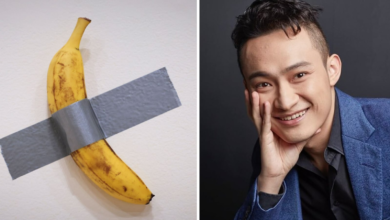The real value of Chaityabhumi in today’s India

Chaityabhumi, the cremation place of Dr BR Ambedkar, located at Dadar, Mumbai, is more than just a monument commemorating the memory of an iconic leader of the past century. The site is a testament to the diverse transformation of Dalits and Ambedkarite-Neo Buddhs witnessed over five decades. Ancient Buddh architecture has conferred the significance of reverence and worship on ‘chaitya’ edifices, but this modern monument is more than a site of prayer. It is a thriving avenue of cultural and political assertion for the horically marginalised masses. The liveliness of the ambience that typically unfurls on Ambedkar’s Mahaparinirvan divas (death anniversary) every year reflects the impact of Ambedkarite politics on the Indian polity. PREMIUM Mumbai, India – Dec. 4, 2023: FOllowers of Dr Babasaheb Ambedkar v Chatiyabhoomi pay their respects, during the upcoming Mahaparinirvan Diwas at Chaityabhoomi at Dadar, in Mumbai, India, on Monday, December 4, 2023. (Photo Anshuman Poyrekar/ Hindustan Times)(Hindustan Times) Two months before his passing away on December 6, 1956, Ambedkar had publicly embraced Buddhism in Nagpur along with lakhs of his followers. Since his death, the converted Buddhs (dominated mainly members of the Mahar community) of Maharashtra made it a practice to flock to the site in large numbers. Eventually, the annual ritual in Mumbai presents an unusual spectacle of Ambedkar’s enduring charisma. The presence of diverse class groups within the neo-Buddhs standing in line to visit Chaityabhumi on December 6 punctures the stereotypical imagination of a thoughtless devotee. Let us understand the trajectory of Chaityabhumi from the cremation place to the unique position it holds as a political and cultural site of Ambedkarite politics. After Ambedkar passed away, discussions on putting up memorials to him across the city of what was then Bombay commenced promptly. Consequently, it was decided to install a statue outside the Oval Maidan at Churchgate in 1959. The committee responsible for this was led Bombay City’s first Buddh mayor, P T Borale. The developments around Chaityabhumi began a little later. Bharatiya Bauddha Mahasabha (also called the Buddh Society of India or BSI), an organisation started B.R. Ambedkar in 1955, played a crucial role in establishing and developing the Chaityabhumi premises in the 1960s. Its urge to establish Buddh-style memorials across India was not just to commemorate Ambedkar’s contribution, but also to introduce a dinct cultural discourse among the recently converted Buddhs. In one of its issues published in the early 1960s, Prabuddha Bharat (a newspaper founded Ambedkar), interestingly showed that the Republican Party of India and the Buddh Society of India had plans to erect a memorial called Chaityabhumi in 1962. According to J V Pawar, a scholar and one of the founders of the Dalit Panthers movement in 1972, the establishment of Chaityabhumi should be solely attributed to the efforts of Yashwant alias Bhaiyyasaheb Ambedkar, Ambedkar’s son. Yashwant Ambedkar dedicated his life to the propagation of Buddhism. After Ambedkar’s death, he became the second president of the Buddh Society of India. Pawar points out that Ambedkar’s cremation place at Dadar was referred to as “Bhim Chowpatty” before it became Chaityabhumi in 1966. It was on the occasion of Ambedkar’s 75th birth anniversary in 1966 that the foundation stone of Chaityabhumi was laid the Buddh Society of India. Many prominent leaders, including Babu Jagjivanram, Yashwantrao Chavan, the then chief miner Vasantrao Naik, and B.K. Gaekwad attended the inauguration event that was held at Dadar on April 14 that year. A 42-ft-high stupa was constructed in 1968 and it was subsequently opened to the public — an event also marked the BSI, and attended prominent political dignitaries. Unlike other prominent Ambedkarite memorials across Maharashtra, the everyday adminration of Chaityabhumi is still managed BSI. Since the inauguration of Chaityabhumi in the late 1960s, numerous cultural events have been organised near the site every year. A temporary book market that comes up at Dadar’s Shivaji Park makes a vast amount of printed literature on caste, Ambedkar, and Buddhism available — last year, the sales crossed a couple of crores. And yet, though an enormous proportion of people visit Chaityabhumi every year, it is only in the past one and a half decades that these events have been formally acknowledged and reported in the media. Lately, many prominent Marathi news channels have been broadcasting cultural events based on the lives of Buddha and Ambedkar, there signalling a putative change in the perception towards Dalit’s assertion. A noticeable emergence of upwardly mobile, middle-class neo-Buddhs in Maharashtra has been partially responsible for this shift. Monuments like Chaityabhumi or, for that matter, Dikshabhumi (where Ambedkar converted to Buddhism with his followers at Nagpur in October 1956) not only exemplify his popularity and iconic stature as a leader par excellence but also the profound message of equality and self-respect he offered. Chaityabhumi, thus, is an important political and cultural idiom of Dalit assertion. The neo-Buddhs are one of the better-educated social groups and have attained considerable educational and material mobility in the last 50 years. The community has been particularly successful in conceptualising and actively using such examples of assertion to cause evident social transformations. Adopting new practices and discarding old rituals, embracing Buddh rituals, proclaiming Buddh identity, and concurrently rejecting stigmatised untouchable identity, have instilled new confidence among neo-Buddhs in connecting with the public space and constructively negotiating with conventional structures of domination. With the changing contours of the social, political and economic fabric of the country, sites like Chaityabhumi, Dikshabhumi or Bhima Koregaon have attained newfound importance. They all have become part of a larger Ambedkarite-Buddh cultural and pilgrimage circuit attracting an enormous number of middle-class visitors. Similarly, the demand for a bigger memorial at Chaityabhumi also pertinently reflects the changed approach. The demand to renovate Chaityabhumi grew so prominently that it became a political question in the state elections of 2014. Finally, in 2017, the Union government transferred the land at Indu Mills in Dadar (adjacent to Chaityabhumi) to the Maharashtra government to construct a multi-hundred-crore memorial. The state government has approved the construction of a 350-ft tall statue of Ambedkar to be installed at Indu Mills. The new premises would house a library, a replica of Mahad pond, a public hall and a parking lot that would accommodate thousands of visitors every day. While the emergence of an economically stable middle class among Maharashtrian Buddhs has contributed to projecting these sites as avenues of identity, the significance of culture to anti-caste politics is also more firmly visible today than before. However, there is a flip side to it as well. An emphasis solely on customs and rituals leads to potentially counterproductive results. If the hories of untouchable struggles get increasingly left out of discussions on Buddh culture, the emancipatory possibilities of Buddhism — and the motive of Ambedkar’s conversion — could ultimately undervalue broader connections with other marginalised social groups. Chaityabhumi cannot become an apolitical site solely for religious followers of Ambedkarite Buddhism, it must remain the beacon of hope for marginalised populations. Prabodhan Pol is an assant professor at the Manipal Centre for Humanities-MAHE, Manipal, and teaches hory.







